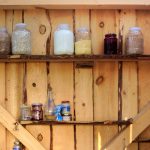
Summary
What is compost?
Home composting: which composter to choose?
Making home compost
How to make a successful compost?
Considering that 30% of your waste is compostable, home composting allows you to reduce the household waste through an ecological and natural process, which in the end provides you compost for free! At the end of this post, you will have more knowledge on how to DIY your compost at home.
What is compost?
Compost is the result of recycling organic materials. Its purpose is to nourish, protect, and strengthen our plants and vegetable garden. It is also a natural and quality fertilizer that does not give off any foul smell. It is comparable to humus used for agriculture and gardening. Compost, therefore, improves plant growth.
Home composting: which composter to choose?
Whether you use a composter (bin or silo, rotary composter), a compost heap, or a vermicomposter, it must have a place in your garden or balcony.
The compost bin or vermicomposter is more challenging to hide.
Make a place for them at the back of your garden or balcony where they can be hidden from view.
To avoid neighborhood conflicts, opt for a discreet model at a reduced price.
The pile of waste is less discreet and recommended for large areas as it allows you to make a secluded place in the garden where it will be hardly visible.
Good to know: you can also make your compost bin using boards or pallets.
Making home compost
It is not enough to just put the waste in bulk and wait for the compost to form. Simple rules allow you to get compost in a few months and improve the quality of your compost.
What waste is used to make compost?

To make compost, you will use compostable organic waste that you will sort during your selective sorting. This process is called home composting kitchen waste: peelings, coffee grounds, and filters, bread, leftover food, fruits and vegetables, cheese rinds, eggshells, etc.;
Household waste: tissue or paper towels, non-illustrated newsprint, shavings, wood ashes, houseplants;
garden waste: grass clippings, weeds, wilted flowers, straw, shredded branches.
Please, do not use the following in your domestic composting:
- non-organic waste: glass, metals, fabrics, used oil,
- animal bedding, excrement, shellfish, frying oil,
- meat and fish are also to be avoided as they generate bad smells and attract animals.
How to make a successful compost?
There are three keys to making a successful compost: mixing, aeration, and humidification.
Mix each time you add waste to start the fermentation process:
For the process to be efficient, you must alternate waste, both dry waste (dead leaves, straw…) and wet waste (grass, turf…).
For each layer of organic matter, do not go beyond 20 cm.
At the beginning of the process, the first two months, it is essential to mix regularly.
Aeration is essential, as it brings the necessary oxygenation to the mixture. Oxygen is vital to the micro-organisms involved in the decomposition process.
Moisten: the compost heap must be moist enough, like a pressed sponge.
Without enough humidity, the micro-organisms die, and the transformation stops.
Too much moisture creates a lack of aeration, which slows down the process.
That’s it, so you are now done with making your home compost. Please, remember to share your comments in the section below. And, should you wish to read some more on composting, please check out some new posts on:
Vermicomposting: Raising Worms to Compost Your Waste
How Compost Is Ecological and Good for Your Garden
Do not forget to share and comment on these also.
Stay posted!











